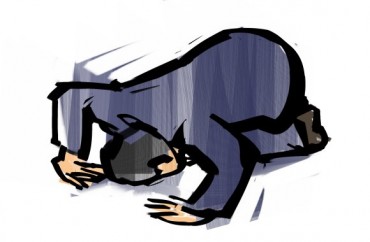
‘Much-needed compromise’ with students who wanted it destroyed
The University of Kentucky can’t decide what to do with its historical mural that depicts the slavery of Kentucky’s past.
President Eli Capilouto covered it up nearly four years ago after meeting with black student activists who said it microaggressed them. He backtracked three years ago after a campus committee recommended instead offering more art to contextual the mural.
This spring, Capilouto backtracked his backtrack to satisfy protesters who conducted a “flexible” hunger strike in pursuit of a liberal wish list that included the mural’s re-shrouding.
Perhaps dizzy from the consistent inconsistency toward the mural, the taxpayer-funded institution has decided to simply stop holding required classes in the mural’s home of Memorial Hall.
Lexington Herald-Leader columnist Linda Blackford says the change will take effect this spring semester, “ensuring that students who are offended by the building’s central mural that depicts early Kentucky history with black and Native American stereotypes are no longer forced to see it.”
MORE: Universities nationwide remove historic artwork deemed offensive
The mural has more than historical significance. It is “one of the only true frescoes in the United States,” and the largest in America painted by a woman, the UK graduate Ann O’Hanlon, according to the O’Hanlon Center for the Arts.
Blackford portrays the move as a “much-needed compromise” between activists who wanted it removed – in other words, destroyed – and those who wanted the Public Works Administration-commissioned mural (below) preserved:
Spokesman Jay Blanton said large lecture classes in anatomy, psychology and sociology were already planned for the fall semester, but they will be moved for spring. Groups that choose to use Memorial Hall will be able to. …
Blanton said the mural will be uncovered again, but it’s not clear what the building will become. It was originally built in 1929 as a monument to those killed in World War I.
“Ultimately, right now President Capilouto wants more dialogue and to involve more people about how do we further contextualize the space,” Blanton said.
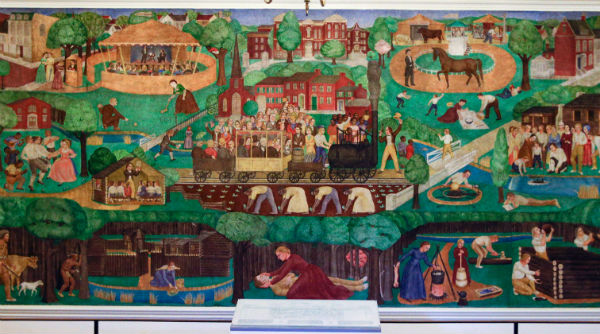
MORE: UK grants liberal wish list after students claim to stop eating
Students who wanted the mural destroyed faced pushback from an artist who was commissioned to create more art to contextualize it.
The self-described “black immigrant female gay artist,” Karyn Olivier, wrote a Herald-Leader op-ed this spring after black student activists brought Capilouto to heel:
When I first thought of what to do, my initial instinct was “why not remove the black and brown figures from the mural, leaving only ghost-like shapes?” However, erasing and (in effect) defacing a work of art is a less powerful gesture than confronting what is there. We must dissect and critique our American histories, shed light on what’s hidden/buried, and expose this complicated landscape for all to investigate and interrogate. … Erasing (or removal), we know, does not erase the historical facts of slavery and oppression.
Olivier even gave a qualified defense of the artistic choices of O’Hanlon, who created the mural. She showed in some way that “America—and Kentucky specifically—was built by African-Americans,” placing them in the center of the mural and putting “the symbolism of industrialization—the railroad—literally on the backs of the slaves.”
One of the options for Memorial Hall is to dedicate it to “issues of race and reconciliation,” according to Blackford.
The director of the UK Art Museum, Stuart Horodner, said it could host lectures, screenings and other “collaborative programming” with various UK entities: “Imagine a talk about WPA era murals in America one month, a symposium on Toni Morrison another, and so on. The possibilities are endless.”
The “compromise” on Memorial Hall comes shortly ahead of a new documentary about the mural by Eastern Kentucky University Prof. John Fitch.
“Painted in Stone: The Kentucky Mural” discusses the struggles of black students at UK going back to the beginning of desegregation 70 years ago. One of the spring protest leaders, Tsage Douglas, says in the documentary that UK must educate white students to “become more aware of diversity” on top of making black students more comfortable.
h/t Inside Higher Ed
MORE: UK to cover mural because it’s a ‘microaggression’
MORE: These 10 college presidents surrendered to diversity demands
IMAGES: minoru suzuki/Shutterstock, Mark Cornelison/University of Kentucky
Like The College Fix on Facebook / Follow us on Twitter


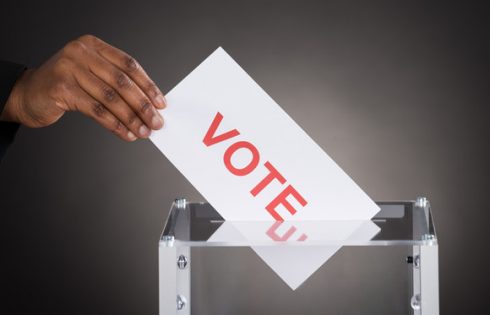
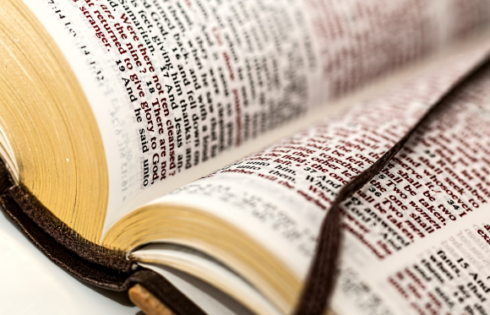
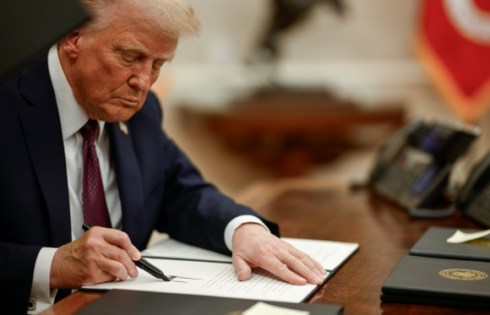

Please join the conversation about our stories on Facebook, Twitter, Instagram, Reddit, MeWe, Rumble, Gab, Minds and Gettr.